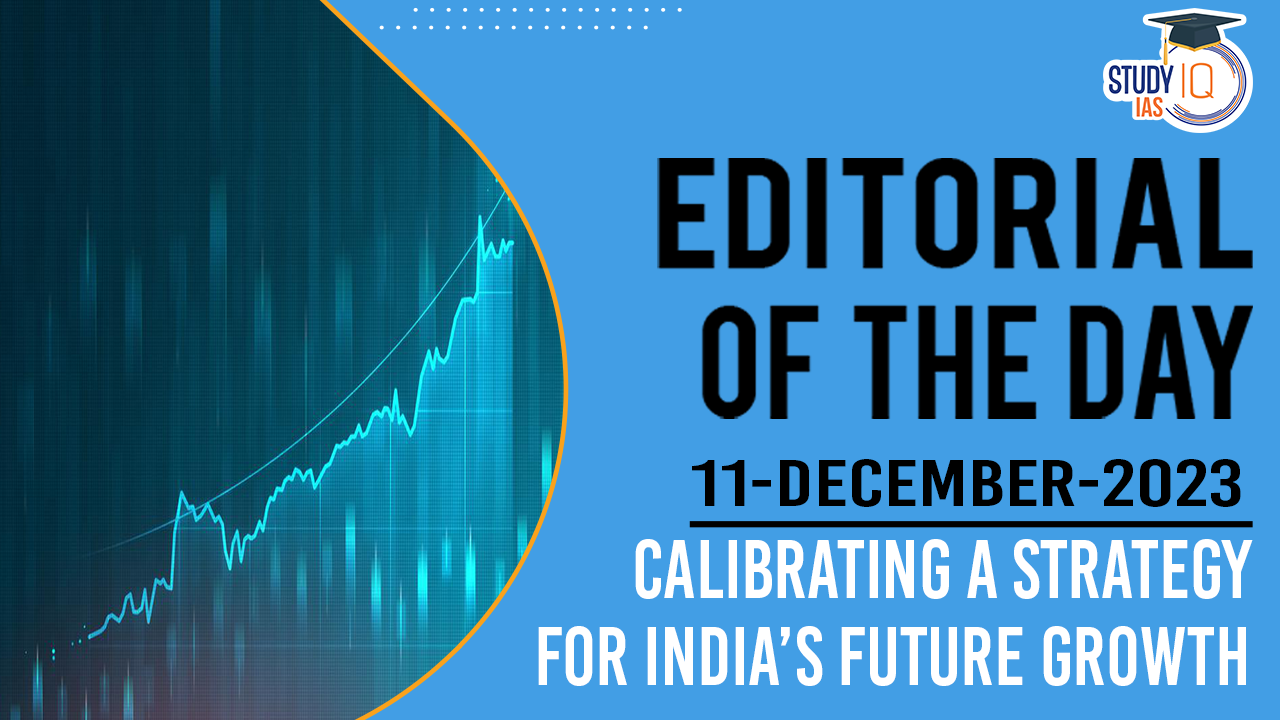Table of Contents
Context: India’s economic growth projections and strategies for 2023-24 and beyond encompass various aspects, including GDP growth rates, investment and savings rates, employment strategies, and fiscal responsibilities. Here’s a detailed summary:
Economic Growth Projections
- Reserve Bank of India’s Projection: The RBI forecasts India’s growth at 7% for the fiscal year 2023-24.
- International Estimates: The IMF and World Bank estimate India’s growth at 6.3%.
- The IMF projects an annual growth rate of 6.3% for India until 2028-29.
- First Half Performance: In the first two quarters of 2023-24, India recorded growth rates of 7.8% and 7.6%, respectively.
We’re now on WhatsApp. Click to Join
Global and Domestic Challenges
- Deglobalisation Trends: Current global geopolitical conflicts and sanctions disrupt supply chains and international settlements, impacting global GDP growth and export demands.
- India’s Export Trends: India’s exports as a share of GDP peaked at 25% in 2013-14 but fell to 22.8% in 2022-23. The export-led growth strategy may no longer be viable for India.
Investment and Savings
- Domestic Growth Drivers: India needs to rely more on domestic growth drivers, with domestic savings being crucial for sustaining a 7% growth.
- Savings Rate: The nominal saving rate in 2022-23 was about 29%.
- Household Sector Savings: There’s been a decline in household sector savings in financial assets, posing a risk to growth potential.
Investment Rate in Medium Term
- Gross Fixed Capital Formation (GFCF): The nominal investment rate was 29.2% of GDP in 2022-23.
- Real Investment Rate: Adjusting for deflators, the real investment rate is about 33%, which needs to increase to enable a 7% growth.
Employment Strategy
- Demographic Trends: India’s working-age population is expected to peak at 68.9% in 2030.
- Training and Skilling: Allocating resources for training and skilling the workforce is essential.
- Non-Agricultural Growth: High non-agricultural growth is necessary to absorb labour from agriculture and counteract the labour-substituting impact of new technologies.
Climate Commitments
- Carbon Emission Reduction Targets: India aims to reduce carbon emissions by one billion tonnes by 2030 and achieve net-zero emissions by 2070.
- Green Initiatives: The Green Grids Initiative and One Sun One World One Grid, along with a focus on electric, ethanol-based, and hydrogen fuels, are part of India’s climate commitments.
Fiscal Responsibility
- Fiscal Targets: Adhering to fiscal responsibility targets, including reducing fiscal deficit and debt-to-GDP ratios, is essential for sustainable growth.
Medium-Term Growth Prospects
- Feasible Growth Rate: A growth rate of 6.5% is feasible in the next two years.
- Long-Term Strategy: To achieve a 7% to 7.5% growth rate, India must focus on raising savings and investment rates, improving skills, and adopting employment-friendly technologies.


 New Window of Opportunity for India amid...
New Window of Opportunity for India amid...
 Cetacean Morbillivirus: Meaning, Feature...
Cetacean Morbillivirus: Meaning, Feature...
 Transforming a Waste-Ridden Urban India:...
Transforming a Waste-Ridden Urban India:...

























